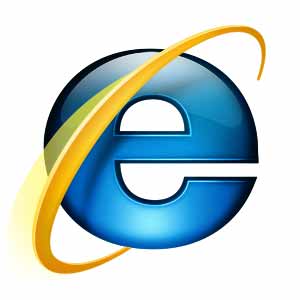
Microsoft’s Internet Explorer (IE) turned things around in 2012, posting an annual usage share gain for the first time in the last eight years, according to data published earlier this week by a Web analytics company.
Net Applications, which tracks browser usage by monitoring unique visitors to customers’ websites, said IE ended 2012 with a 54.8% share, up 2.9 percentage points from the start of the year.
The uptick was in stark contrast to nearly a decade of decline. In each of the years from 2005 through 2011, IE lost major chunks of usage share, with several of those years recording decreases of seven or more percentage points.
The years of contraction turned the once-dominant IE — in early 2005, it accounted for nearly 90% of all browsers by Net Applications’ count — into one of just three browsers that fight for users. Battling first with Mozilla’s Firefox, which celebrated its seventh anniversary last November, then with Google’s Chrome, a browser launched in September 2008, IE flirted with ceding its majority position in December 2010, when it hit a low of 51.9%, but edged back from the precipice.
“It stands to reason that Microsoft’s IE fortunes would begin to look-up,” said Al Hilwa, an analyst with IDC, in an email today. “The turnaround can be traced back to the launch of IE9 and the pivot around HTML5 support, especially the Canvas functionality.”
Canvas is an HTML5 element that allows for dynamic rendering of two-dimensional images. IE9 not only supported Canvas, but accelerated its rendering by calling on the PC’s graphics processor.
“IE9 was a superb browser and was only improved by IE10, essentially closing the gap with the fast-moving Chrome and FireFox efforts,” Hilwa added.
IE’s turnaround didn’t start with IE9′s March 2011 release – Microsoft’s browser lost 6.5 percentage points between then and its December 2011 low point — but others beside Hilwa have cited that edition for reversing Microsoft’s browser fortunes.
It seems virtually impossible that IE will reclaim the supremacy it once enjoyed, not with players like Mozilla and Google having entered the fray since Microsoft’s heyday.
Hilwa agreed. “The browser shares will roughly map out to devices’ installed base and browsing abilities of these devices,” Hilwa argued.
And that may be a problem going forward for IE. With Apple’s insistence that the technology industry is now in the early days of a “post-PC” era — a characterisation Microsoft executives have contested, or at least modified to “PC-plus” — possible disruption of Windows’ influence, and thus IE’s, may loom in the future.
“The shift to tablets and the early dominance of iPad — and now the proliferation of Android-based tablets with the Kindle line and others in the $200 to $300 range — means that we are facing a more fragmented world of browsers for the foreseeable future,” Hilwa said.
In fact, Net Applications painted a gloomier picture for IE away from the desktop. In the mobile browsing space — defined by the analytics firm as smartphones and tablets — Apple’s Safari browser dominated with a 61% share in December 2012. Safari is the default browser on iOS, the Apple operating system that powers the iPhone and iPad.
On mobile, IE9 accounted for just 1% of all usage last month, with IE10 adding a minuscule 0.06%, both numbers reflecting the very minor impact Microsoft’s made so far on the smartphone and tablet markets.
What IE has going for it, of course, is its maker’s very strong position on desktops — Windows runs nearly 90% of all personal computers — and its lock on the business market. Both bode well for Microsoft’s browser.
“[IE's] enterprise focus is very important for Microsoft … [and] is a key differentiator and one that other browser makers are not as well aligned to support,” said Hilwa. “As long as the Microsoft client platform remains strong and IE browser innovation continues, Microsoft will do well.”
Some, however, would argue today that that’s a big “if,” considering the inroads made by non-Windows devices through BYOD (bring your own device) programs and enterprise purchases of tablets like the iPad as replacements for some workers’ mobile hardware — including Windows-powered notebooks.
But for now, Microsoft can celebrate its 2012 gains.
Internet Explorer gained usage share in 2012 for the first time in eight years.





